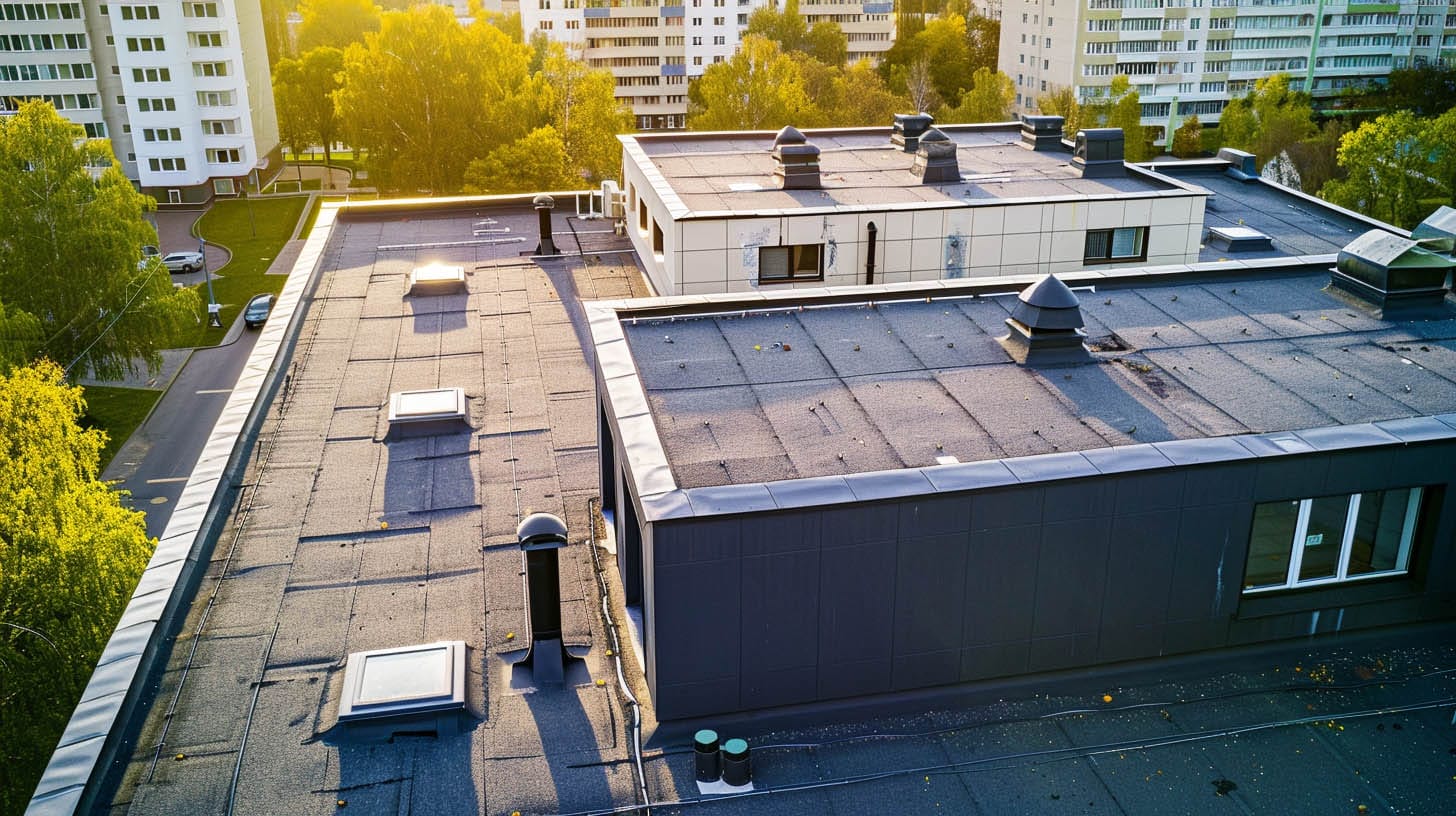
Flat roofs or low slope roofings, are a practical and aesthetically roofing choice for many homeowners and businesses due to the ease of maintenance / sleek appearance. Unlike pitched roofs, flat roofs present a set of challenges and advantages. Regular care and maintenance are crucial to ensure the longevity and functionality of these structures. In this article, we provide key strategies to maintain the integrity of your flat roof, ensuring it remains in optimal condition year-round.
The first step in maintaining a flat roof is to understand the specific type and material of your roof. This will guide the maintenance strategy. Flat roofs can be made from several materials, each with its strengths and weaknesses:
Regular inspections of your flat roof to identify potential issues before they escalate. A bi-annual inspection is advisable, with additional checks following extreme weather events. During inspections, look for signs of damage such as blisters, cracks, pooling water, and compromised seams. Check us out.
Remove leaves, twigs, and other debris accumulated on the roof. This not only prevents damage but also ensures that water can flow freely, reducing the risk of pooling and subsequent leaks.
Trim trees and vegetation near your roof to prevent damage from falling branches. Overhanging branches can scratch and puncture the roof surface, leading to leaks and other issues. It also will help reduce the formation of moss and algae which will decrease the longevity of the roofing system.
Repair leaks immediately to prevent water damage to the interior of your property. Flat roofs are particularly prone to leaks at seams and around flashings after 20 years. Regular maintenance checks can help identify and rectify these issues promptly. The epdm structure itself will last longer vs the flashings on the roof.
Be mindful of the weight your flat roof bears, especially during winter. Snow and ice accumulation can create pressure on the roof structure. If necessary, safely remove excess snow or ice to prevent structural damage or a contastrify.
Ensure that your gutters and downspouts are clear of debris and clogs. A functional drainage system is critical for preventing water accumulation on your flat roof.
Regularly inspect the seams, membranes, and flashings on your roof for wear and tear. Any issues should be repaired swiftly to maintain the roof’s integrity.
Teflon Roofing, based in Chambersburg, PA. We emphasize the importance of a proactive approach to roof maintenance. By adhering to these guidelines, homeowners and businesses can extend the life of their flat roofs and prevent costly repairs down the line.
Chambersburg, PA 17201
Open: 24/7
Contact Us Today
Copyright © Teflon Roofing